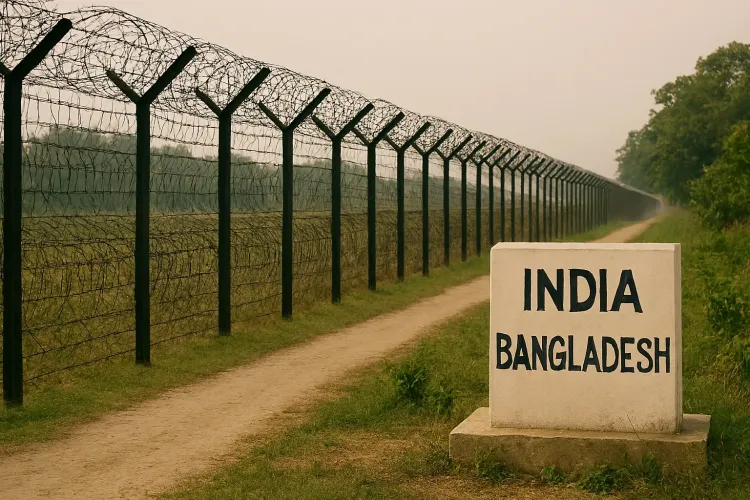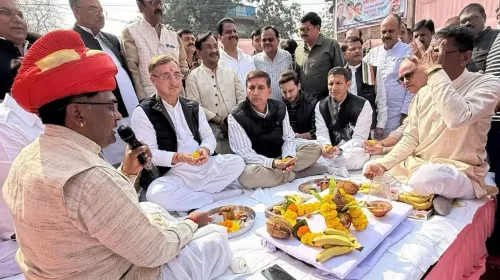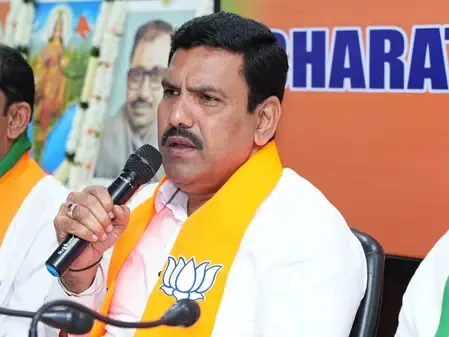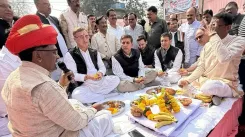Why Does Dhaka Fear the Fence?

Synopsis
Key Takeaways
- India's fencing initiative aims to secure its border against illegal activities.
- Bangladesh fears the implications of increased surveillance on its territory.
- Recent political shifts in Bangladesh complicate relations with India.
- Protests against border fencing highlight local discontent.
- Significant stretches of the border remain unfenced or inadequately secured.
New Delhi, Aug 14 (NationPress) The Meghalaya government has called upon the Union Home Ministry to persuade Bangladesh to allow the establishment of border fencing closer to the international boundary. This initiative aims to secure a 40-kilometre stretch that remains unfenced, ensuring that villages are not left outside the secured area.
Historically, India’s fencing efforts with Bangladesh have been contentious. In January, the Bangladeshi Foreign Ministry summoned the Indian High Commissioner in Dhaka to express its significant concerns regarding the ongoing attempts to construct barbed wire fencing.
India has reiterated that it is adhering to all established protocols and agreements between the two nations.
The border between India and Bangladesh spans 4,096.7 kilometres. The fencing initiative commenced in 1986, largely due to escalating worries about migration. The Indian government emphasized that the construction of barbed wire fencing, along with border lighting and technical installations, serves to protect the border from criminal activities.
With the recent changes in leadership, the situation has become even more fraught following the fall of the Sheikh Hasina regime. The current government displays less amicable relations with India and has shifted its alignment towards Pakistan, making border fencing a more pressing issue.
Bangladesh contends that fencing infringes upon the India-Bangladesh Guidelines for Border Authorities, which prohibit any defense structures within 150 yards of the zero line of the international border. Conversely, India maintains that a simple fence does not qualify as a defense structure.
Dhaka expresses concerns that India's advanced fencing technology could be utilized to monitor activities within Bangladesh.
Despite generally amicable relations between India and Bangladesh in recent times, the border has long been a source of tension. Issues such as illegal immigration, counterfeiting, arms smuggling, and cattle trafficking have persisted.
Additionally, the regime led by Muhammad Yunus strongly opposes the fencing due to its connections with Jamaat-e-Islami, the organization implicated in facilitating extensive illegal migration. Any border security measures could hinder their operations.
Enhanced border control would adversely affect those engaged in illegal activities. While it would deter infiltrators, it would also complicate the operations of cattle and drug smugglers, many of whom have established themselves near the border, thriving in an open border environment.
According to Indian agencies, the current government in Bangladesh provides full access to Pakistan, allowing them to infiltrate terrorists easily. Pakistan has been reportedly conducting training modules in Bangladesh aimed at targeting the eastern states.
After Yunus assumed power, numerous terrorists linked to the Ansarullah Bangla Team were released, and their whereabouts remain unknown. With an open border, such individuals can easily cross into India.
Recently, protests against the fencing have erupted in Chapainawabganj, Naogaon, Lalmonirhat, and the Tin Bigha Corridor. The Jamaat is not only contesting the fencing but is also against the installation of solar lights in border regions, as these measures complicate their smuggling operations.
Currently, approximately 950 kilometres of the border remain unfenced. Furthermore, in several areas, existing fencing is either loose or damaged. The concertina wire utilized is often rusted, and in certain regions, the fencing is challenging due to shifting river courses.









